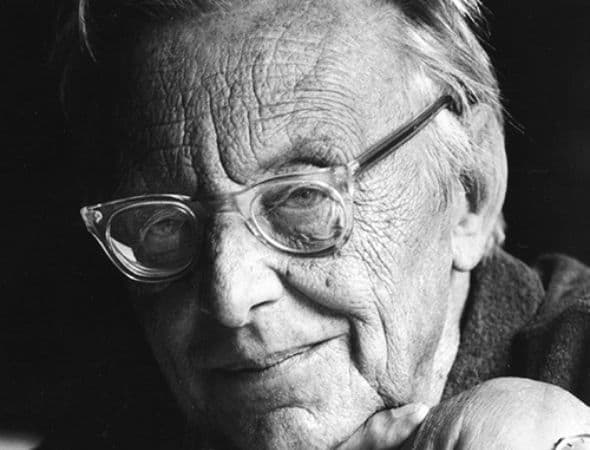ORFF: Carmina Burana
by Jeff Counts
THE COMPOSER – CARL ORFF (1882–1971) – With or without the bombastic medieval oratorio that made him famous in the concert hall, Carl Orff would have been well known for his work in the classroom. His five-volume Musik für Kinder and expanded Schulwerk system, which originated in the 1920s as an “elemental method” for childhood education that included music, dance, and improvisation, are still in use around the world. Anyone who has seen an primary school concert featuring an array of floor-mounted marimbas and other purpose-built toy percussion has witnessed the popular “Orff Approach” in practice. Fittingly, the three Schulwerk pillars of sound, movement, and spontaneity were guiding principles in his professional composing life too.

Orff-Zentrum München, CC BY-SA 4.0 https://creativecommons.org/licenses/by-sa/4.0, via Wikimedia Commons
THE HISTORY – Equal to Orff’s enthusiasm for the young music of the Germany’s kinder was his fascination for the old music of the Baroque and before. His keen attention to the sacred stage works of musical antiquity convinced him that the most effective concert (and educational) experiences were those that combined various artistic elements into a unified theatrical whole. He was on to something, but the only successful embodiment of this theory he would ever make was in 1936 with Carmina Burana. The title comes from a collection of 13th century Latin and German poems that translates roughly to “Songs from Beuern”, “Beuern” being the site of a Bavarian monastery of the Benedictine Order. Orff came across a set of modernized translations of the literary Carmina Burana in the catalogue of a Würzburg bookshop and when he got his hands on the illustrated volume in 1934, he was instantly “assailed by images and words.” So intense was the experience, the composer began sketching out a framework for his grand interpretation of the texts before he fully understood them. O Fortuna was the opening poem of the book, and the colorful depiction of the Wheel of Fortune that complimented it was particularly inspiring for Orff. As a mighty frame for the other 23 numbers of the oratorio, Orff’s orchestrated O Fortuna is among the most recognizable three minutes in music history, limitless in its pop culture applicability. Carmina Burana entire is a primitivist marvel, full of infectious rhythm and plainspoken secular pleasures, with songs that are grouped into three large parts: “Spring”, “In the Tavern” and “The Court of Love”. The premiere was a huge success, but the real life of this score wouldn’t begin until after the War, when the where and when of its creation could be perhaps forgiven, if not forgotten. Orff, no fool, knew he had struck gold and told his publisher that all his previously published work could be destroyed.
THE WORLD – Elsewhere in 1936, construction on the Hoover Dam was completed, Jesse Owens won four gold medals at the Berlin Summer Olympics, Syria signed a treaty of independence with France, and Federico Garciá Lorca was murdered by Spanish Fascists.
THE CONNECTION – Carmina Burana has been performed many times by Utah Symphony. The most recent presentation was in 2015. Jun Märkl conducted.












